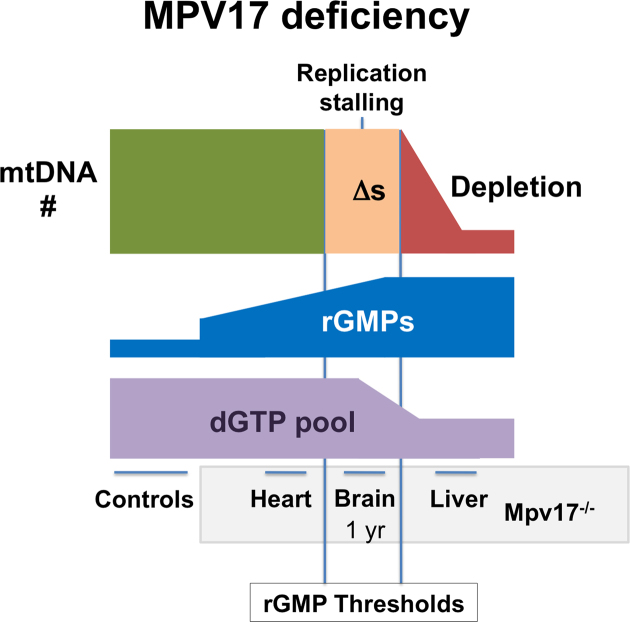Figure 6.
Model of disease mechanism for MPV17 deficiency. Loss of function of MPV17 in humans and mice results in multiple deletions and depletion of mtDNA. In mice, high levels of embedded rGMPs are a pronounced mtDNA abnormality that appears to be an unavoidable consequence of Mpv17 deficiency, which, we propose, is the result of changes in the local ratio of rGTP/dGTP. The exact level of embedded rGMPs is expected to depend on tissue specific features of nucleotide metabolism and the rates of mtDNA synthesis and turnover, but whenever rGMPs exceed a certain threshold it impedes DNA replication causing stalling, manifesting as multiple deletions (Δs), as seen in the brain of 12-month old Mpv17−/− mice. Worsening of the problem would be expected to lead eventually to complete replication arrest. Therefore, we interpret the lowering of the dGTP and dTTP pools (this report and (5)), as an adjustment of dNTP pools towards equality, to slow replication and improve fidelity (5,34), that allows some functional mtDNA molecules to be maintained indefinitely, as seen in the liver of Mpv17 knockout mice (35).

